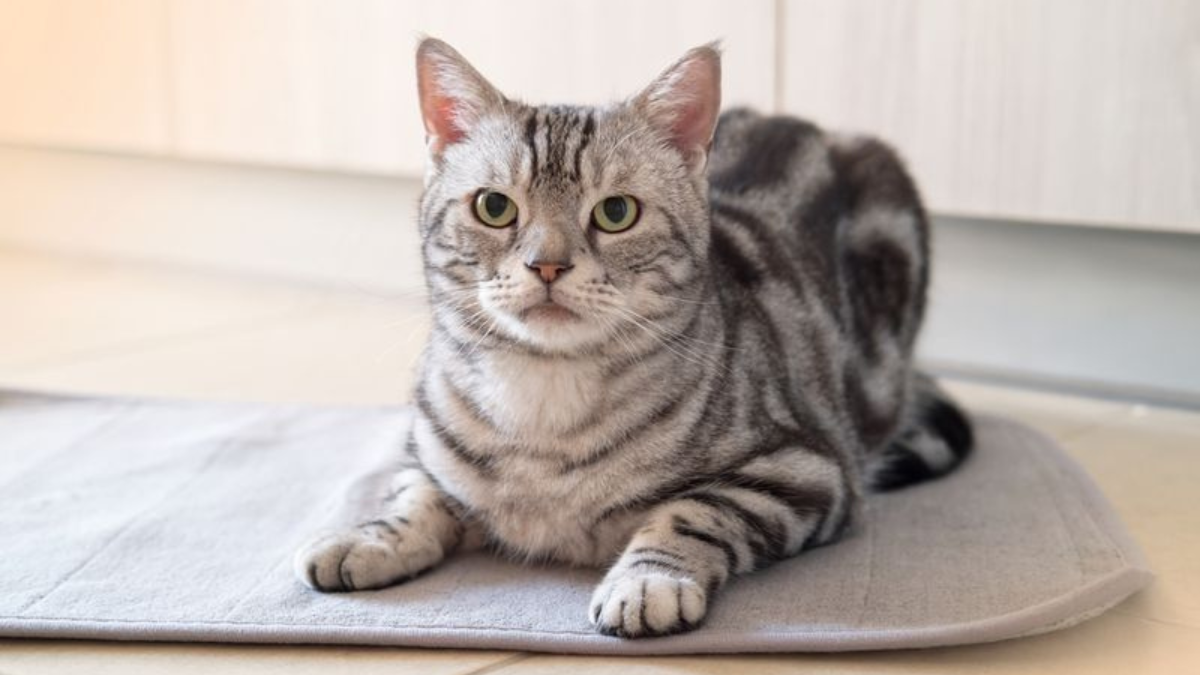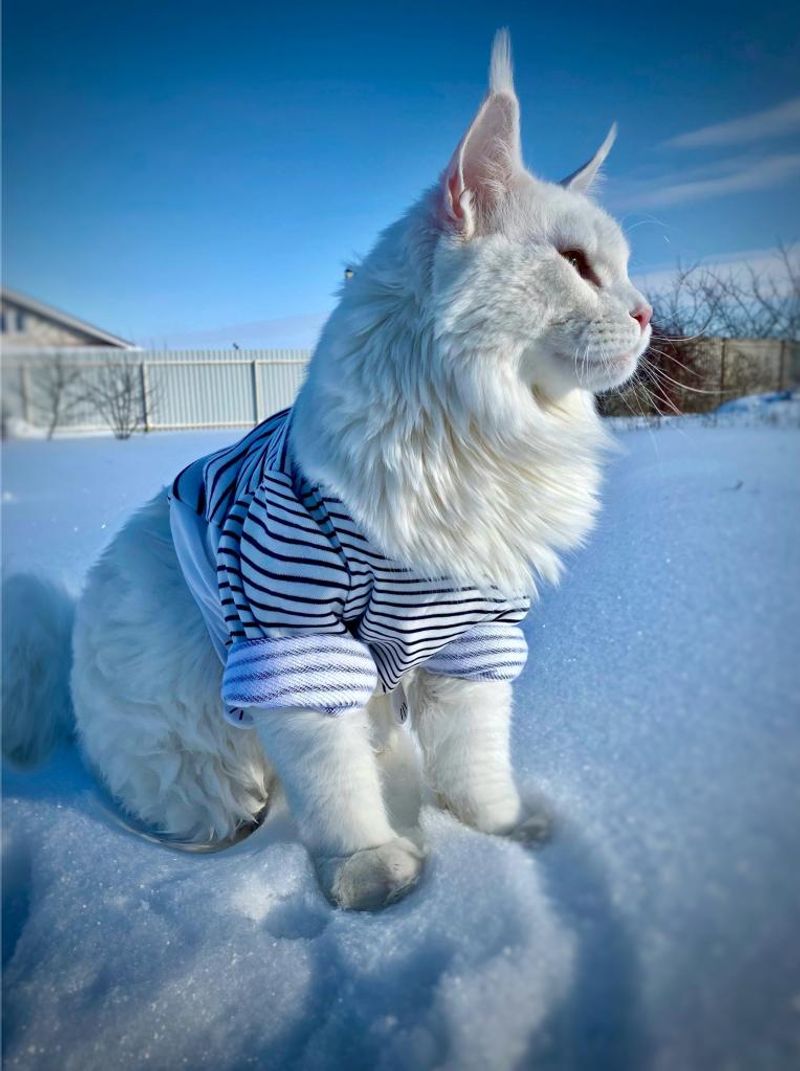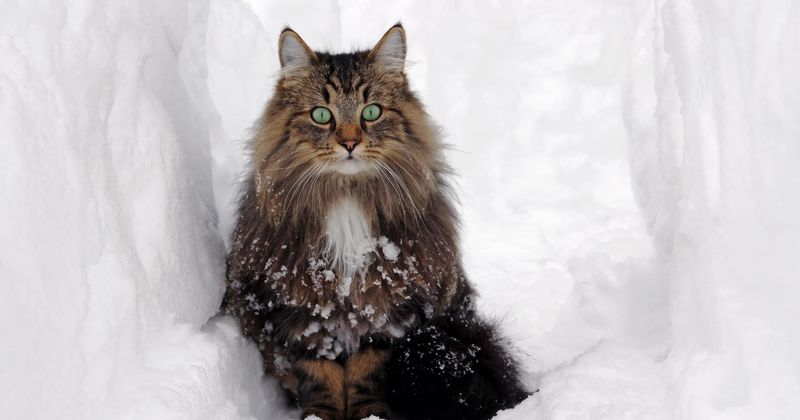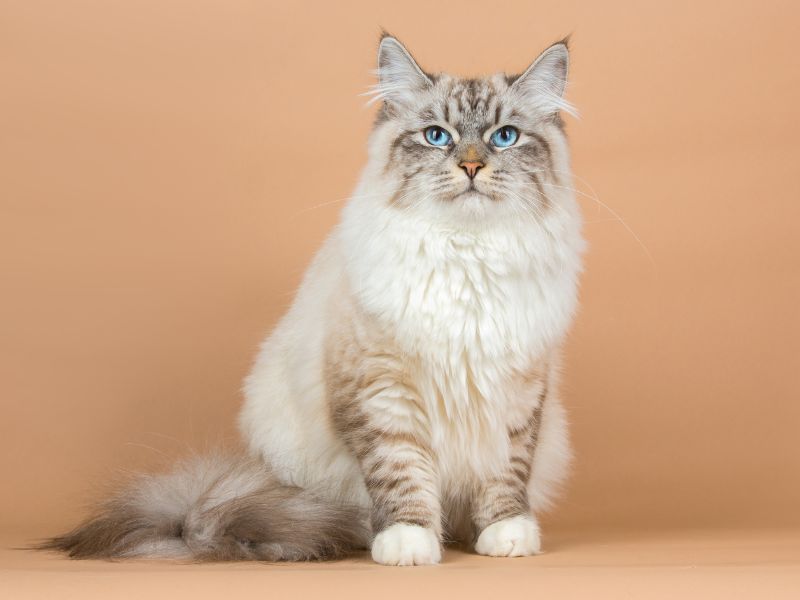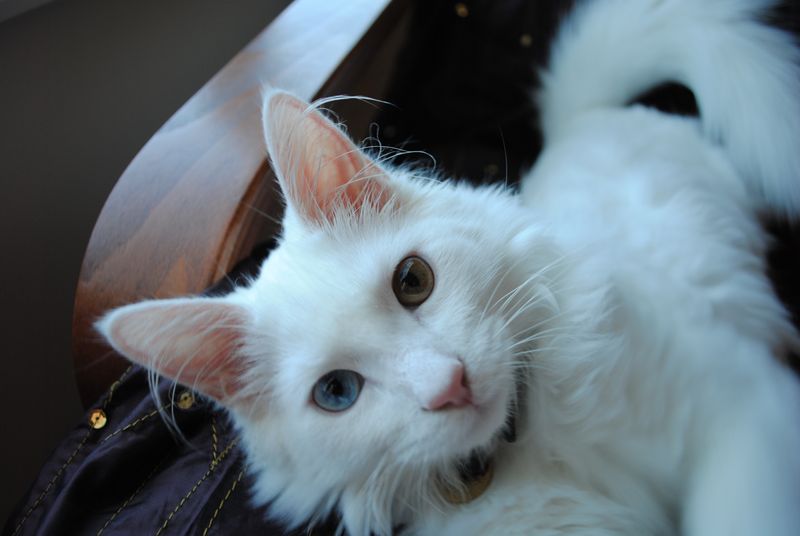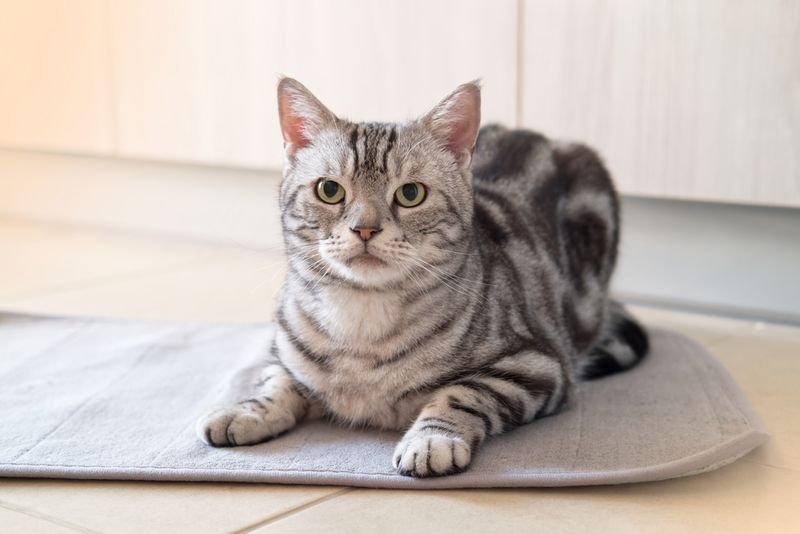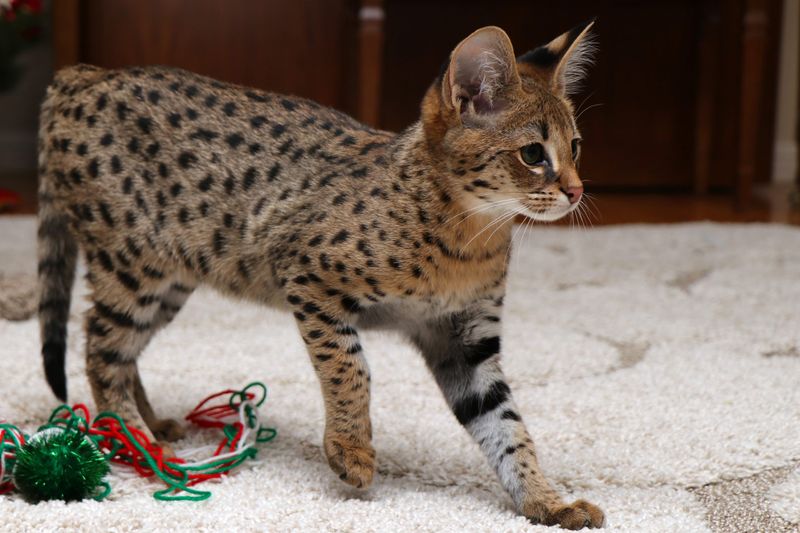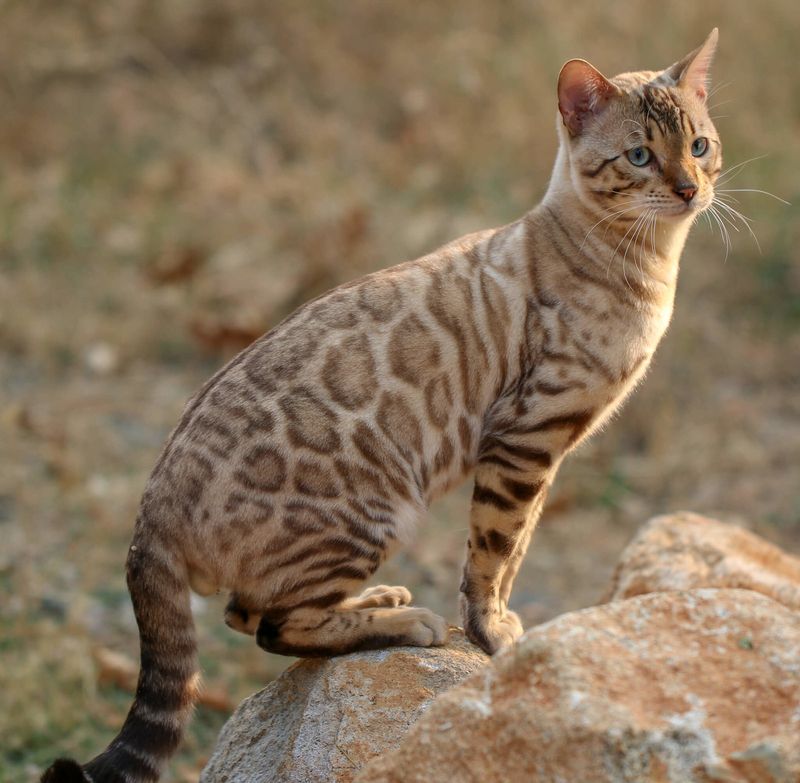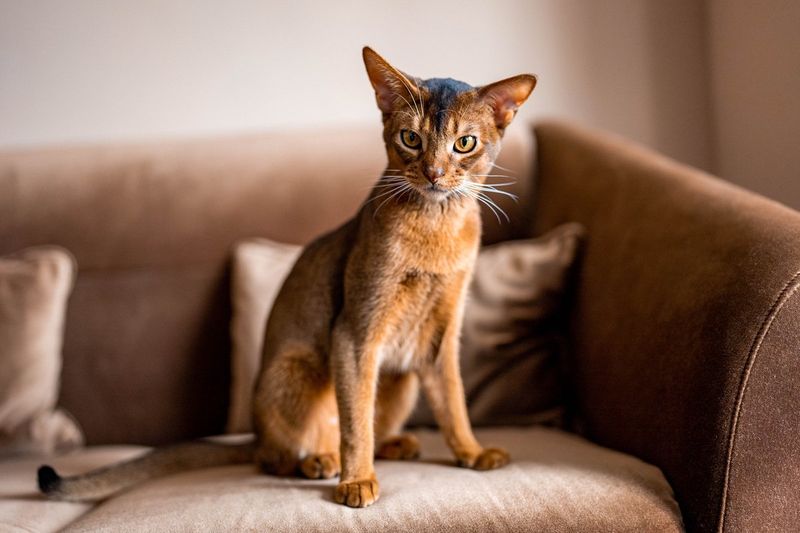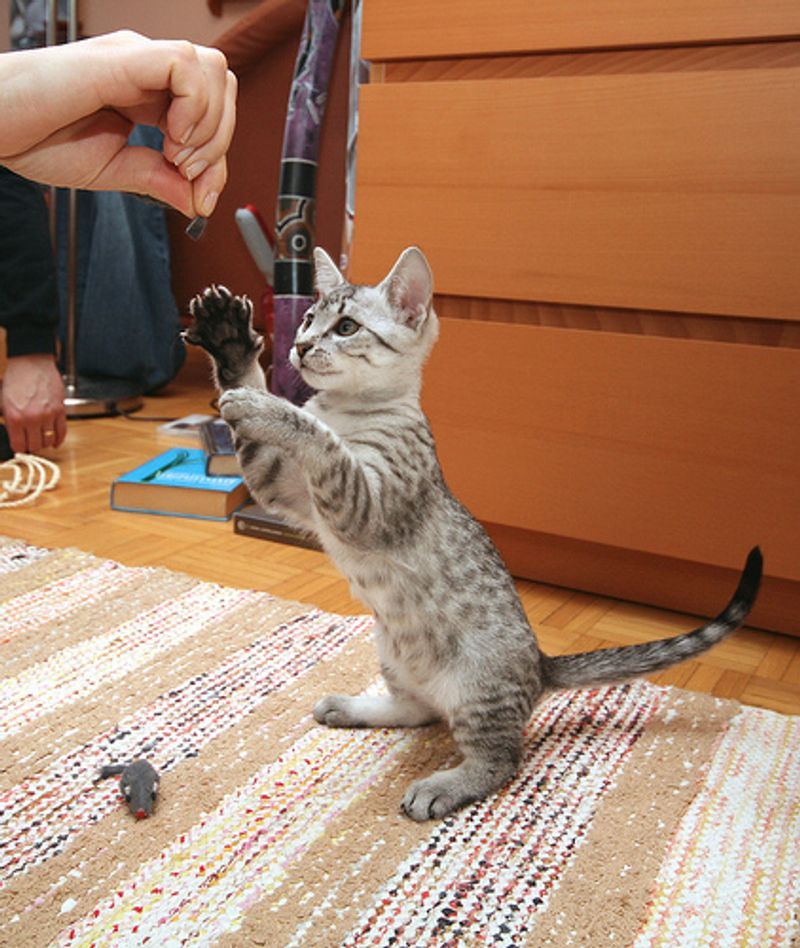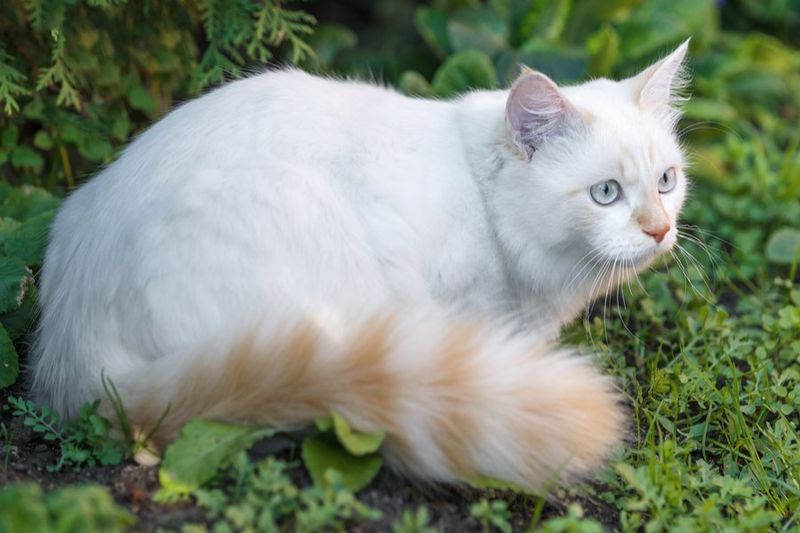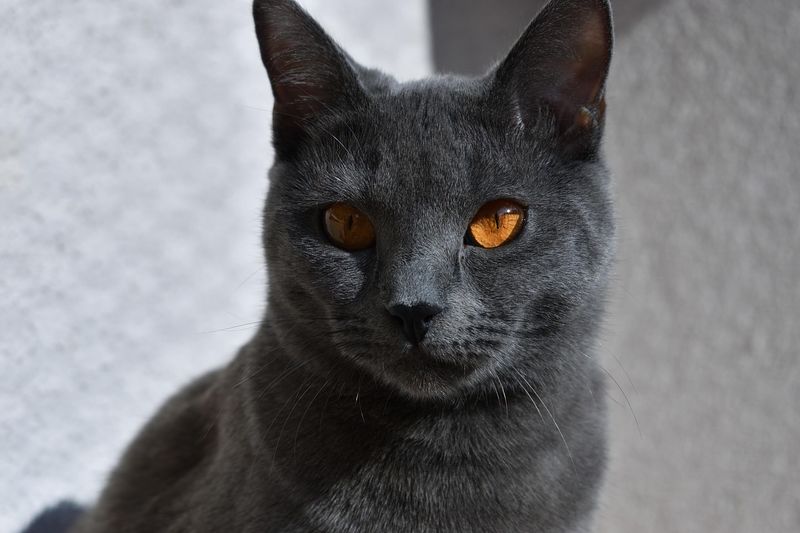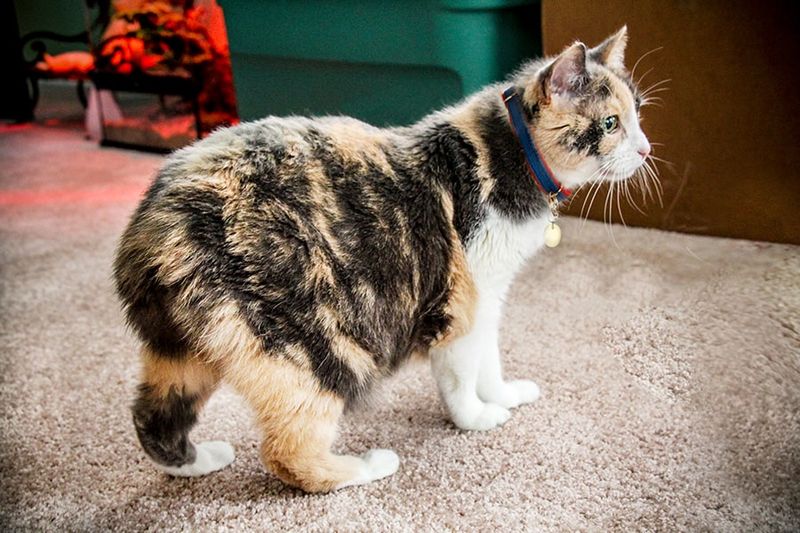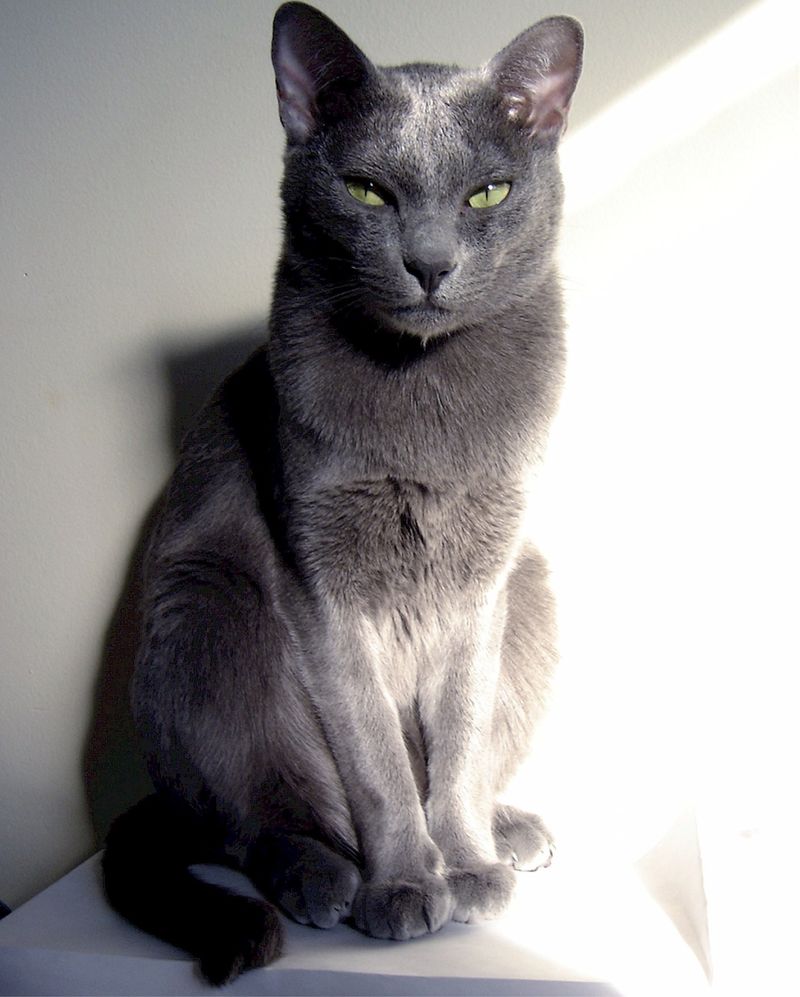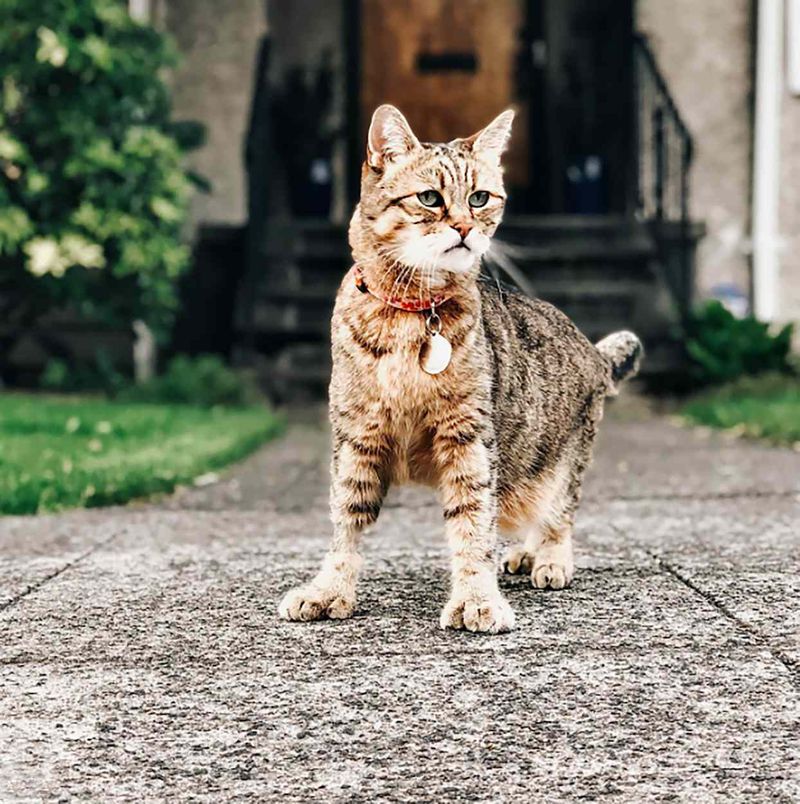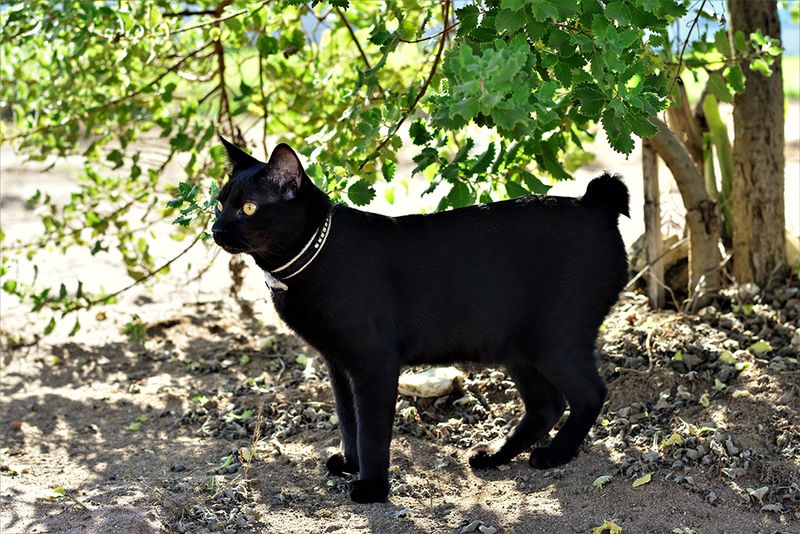📖 Table of Content:
Cats are often known for their grace and agility, but many breeds also possess incredible strength and resilience. These tough feline companions can withstand harsh conditions, recover quickly from illness, and adapt to various environments with ease. Whether you’re looking for a hardy pet or simply curious about which cats are built to last, these 15 breeds showcase nature’s impressive engineering in our feline friends.
1. Maine Coon
Gentle giants of the cat world, Maine Coons are built for harsh New England winters. Their large, muscular bodies and thick, water-resistant coats allow them to thrive in cold climates where other cats would struggle.
Despite weighing up to 25 pounds, these cats remain agile hunters with powerful paws that once helped farmers control rodent populations. Their tufted ears and bushy tails aren’t just for show—these features provide extra warmth in freezing conditions.
Maine Coons are also known for their longevity, often living 12-15 years despite their size, proving their physical resilience matches their impressive stature.
2. Norwegian Forest Cat
Developed in the frigid Scandinavian wilderness, Norwegian Forest Cats evolved to survive brutal Nordic winters. Their double-layered, water-repellent coats protect against snow and ice, while strong claws allow them to climb rocky terrain with ease.
These natural athletes have powerful hind legs that enable impressive jumps and the strength to catch prey much larger than themselves. Unlike many domesticated breeds, they maintain strong hunting instincts and physical capabilities.
Health-wise, they’re remarkably sturdy, with fewer genetic health problems than many purebreds, often living 14-16 years while maintaining their vigor well into old age.
3. Siberian
Forged in Russia’s harsh climate, Siberian cats possess extraordinary physical endurance and cold resistance. Their triple-layered coat insulates against temperatures that would be deadly to other breeds, while their stocky, powerfully built bodies store heat efficiently.
Remarkably strong jumpers, they can leap five times their height from a standing position. Their muscular frame supports this athletic ability while making them excellent hunters and climbers.
A unique trait among Siberians is their hypoallergenic fur, which produces less of the protein that triggers allergies. This biological advantage, combined with their robust immune systems, makes them exceptionally resilient companions.
4. Turkish Van
Known as the “swimming cat,” Turkish Vans have water-resistant coats and powerful swimming abilities that set them apart from typical water-averse felines. Their muscular bodies and strong legs propel them through water with surprising speed and grace.
Originating in the rugged Lake Van region of Turkey, these cats developed exceptional adaptability to extreme temperature fluctuations. They grow thicker winter coats that shed completely in summer, allowing them to thrive in both freezing winters and scorching summers.
Turkish Vans mature slowly, reaching full development at 3-5 years, but their patience pays off with remarkable longevity—many live well into their late teens.
5. American Shorthair
Descendants of working cats brought to America by early European settlers, American Shorthairs were valued for their exceptional rodent-hunting abilities on ships and farms. Natural selection honed their strong, compact bodies and quick reflexes into the perfect pest control machines.
Their broad chests house powerful hearts and lungs, giving them stamina that outlasts many other breeds. The American Shorthair’s muscular jaw can deliver a killing bite to prey almost instantly—a testament to their physical power.
These cats typically enjoy robust health with few genetic issues, often living 15-20 years. Their adaptable immune systems and hardy constitution make them remarkably resistant to disease.
6. Savannah
Born from crossing domestic cats with African servals, Savannahs inherit the wild strength and athleticism of their exotic ancestors. Their long, lean muscles give them explosive speed and jumping ability that far exceeds typical house cats.
Standing up to 17 inches tall at the shoulder, these cats can leap onto refrigerators from a standing position. Their strong leg muscles store energy like coiled springs, releasing it in powerful bursts that propel them to impressive heights.
Savannahs possess remarkable stamina, often running and playing for hours without tiring. Their hybrid vigor grants them excellent health and disease resistance, with many living 15-20 years with few medical issues.
7. Bengal
Bengals combine the wild strength of Asian leopard cats with domestic cat temperament. Their muscular, agile bodies reflect their wild heritage, with powerful shoulders and hind legs that enable them to climb and jump with remarkable precision.
These athletic cats maintain a high activity level well into adulthood. Their stamina comes from efficient muscles and exceptional lung capacity, allowing them to play vigorously for extended periods without fatigue.
Bengal coats feature a unique pelt-like texture that’s more resistant to dirt and water than typical cat fur. This special coat, combined with their robust constitution, makes them particularly resilient to environmental challenges and quick to recover from minor illnesses.
8. Abyssinian
Ancient Egyptian artwork depicts cats resembling today’s Abyssinians, suggesting this breed’s resilience has stood the test of time. Their lean, muscular bodies contain surprising strength for their medium size, allowing them to make precise, powerful movements.
Unlike many domestic cats, Abyssinians retain acute survival instincts and physical capabilities. Their alert nature and quick reflexes make them exceptional hunters, while their efficient metabolism helps them maintain energy throughout the day.
Genetically diverse compared to many purebreds, Abyssinians benefit from a stronger immune system and fewer inherited health problems. Their natural hardiness is evident in their average lifespan of 15 years—impressive for such active cats.
9. Egyptian Mau
The fastest domestic cat breed, Egyptian Maus can run up to 30 mph thanks to longer hind legs and a unique flap of skin extending from flank to back knee that allows greater stride length. This natural sprinting ability helped their ancestors survive in the wild.
Their highly efficient muscles contain more fast-twitch fibers than other cats, enabling explosive bursts of speed and power. Egyptian Maus also possess extraordinary agility, changing direction instantly even at high speeds.
Their internal biology is equally impressive, with larger hearts and exceptionally efficient lungs that deliver more oxygen to muscles. This superior cardiovascular system contributes to their physical resilience and an average 15-year lifespan.
10. Turkish Angora
Surviving near extinction in the early 20th century, Turkish Angoras demonstrate remarkable genetic resilience. Their deceptively delicate appearance hides a hardy constitution that developed in Turkey’s varied climate, where temperatures swing from freezing to sweltering.
Natural swimmers, they have water-resistant fur and powerful limbs that propel them efficiently through water. Their strong survival instinct helped them persist as a natural breed for centuries without human intervention.
Turkish Angoras show exceptional adaptability to new environments and situations. Their keen intelligence works with their physical capabilities to overcome challenges, while their surprisingly strong immune systems help them resist illness and recover quickly when sick.
11. Chartreux
French monastery cats for centuries, Chartreux were prized for their exceptional mousing abilities and robust health. Their powerful, muscular bodies are surprisingly dense and heavy for their medium size—adult males can weigh up to 16 pounds of solid muscle.
The breed’s broad chest houses strong lungs and heart, providing stamina for extended hunting. Their short, thick legs support a powerful pounce, while their quick reflexes make them formidable predators despite their calm demeanor.
Chartreux possess unusually strong jaws even among cats, capable of dispatching large rodents efficiently. Their physical resilience is matched by their typical good health, with many living well into their late teens with few medical issues.
12. Manx
Evolving on the isolated Isle of Man, Manx cats developed distinctive physical traits, including powerful hindquarters that compensate for their shortened or absent tails. This unique adaptation gives them rabbit-like jumping ability and exceptional balance despite lacking a tail’s counterbalance.
Their strong back legs store energy efficiently, allowing them to leap great heights from a standing position. Manx cats have unusually round, compact bodies with dense double coats that protect against harsh island weather.
The breed’s sturdy bone structure and well-developed muscles reflect their history as working farm cats. Their natural resilience is evident in their hardy constitution and resistance to many common feline ailments, with healthy specimens often living 14-16 years.
13. Korat
Considered lucky in their native Thailand, Korats possess strength that belies their medium size. Their heart-shaped faces and silver-blue coats hide muscles that feel like firm rubber beneath their short, dense fur.
These cats develop slowly, taking up to four years to reach full maturity. This extended growth period allows their muscles and bones to develop exceptional density and strength. Despite their compact size, adult Korats feel surprisingly heavy when lifted.
Korats maintain excellent physical condition throughout their lives, staying active and muscular well into old age. Their genetic hardiness comes from centuries as a natural breed with minimal human interference, resulting in strong immune systems and typical lifespans of 15+ years.
14. Pixie-Bob
Resembling miniature bobcats, Pixie-Bobs have powerful, substantial bodies built for the rugged outdoors. Their thick, weather-resistant coats protect against harsh elements, while their sturdy frames support surprising strength for domestic cats.
Many Pixie-Bobs have polydactyl paws with extra toes that provide better balance and grip for climbing. Their muscular shoulders and large paws give them exceptional digging ability—some owners report their Pixie-Bobs can dig through hard soil like small dogs.
The breed shows remarkable recovery from illness or injury. Their strong constitution and natural vigor reflect their development as a breed designed to mimic the hardiness of wild bobcats, resulting in cats that frequently live 15+ years with few health problems.
15. Japanese Bobtail
Featured in Japanese folklore for over 1,000 years, Japanese Bobtails evolved with unique rabbit-like hopping movements that generate surprising power. Their distinctive bobbed tails result from a natural genetic mutation that doesn’t affect their health or mobility.
These cats possess exceptional balance despite their shortened tails, compensating with stronger core muscles. Their back legs are noticeably longer than their front legs, providing powerful thrust for jumping and running.
Japanese Bobtails demonstrate remarkable hardiness, with few breed-specific health problems. Their diverse genetic background contributes to strong immune systems and excellent overall health, with many living 15-18 years while maintaining athleticism well into their senior years.
